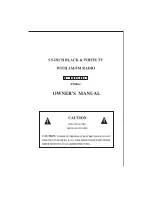
9
ASSEMBLY
Add Fuel (Petrol) Cont’d.
Our engines work well with 10% or less ethanol
blend fuels. When using blended fuels there are
some issues worth noting:
–
Ethanol-petrol blends can absorb more water
than petrol alone.
–
These blends can eventually separate, leaving
water or a watery goo in the tank, fuel valve and
carburetor.
–
With gravity-fed fuel supplies, this compromised
fuel can be drawn into the carburetor and cause
damage to the engine and/or potential hazards.
–
There are only a few suppliers of fuel stabilizer
that are formulated to work with ethanol blend
fuels.
–
Any damages or hazards caused by using
improper fuel, improperly stored fuel, and/
or improperly formulated stabilizers, are not
covered by manufacture’s warranty.
It is advisable to always shut off the fuel supply,
run the engine to fuel starvation and drain the tank
when the equipment is not in use for more than 30
days.
NOTE
Add Fuel (Petrol)
1. Use clean, fresh, regular unleaded fuel with a
minimum octane rating of 85 and an ethanol content
of less than 10% by volume.
2. DO NOT mix oil with fuel.
3. Clean the area around the fuel cap.
4. Remove the fuel cap.
5. Slowly add fuel to the tank. DO NOT OVERFILL.
Fuel can expand after fi lling. A minimum of
6.4 mm (¼ in.) of space left in the tank is required
for fuel expansion, more than 6.4 mm (¼ in.) is
recommended. Fuel can be forced out of the tank as
a result of expansion if it is overfi lled, and can affect
the stable running condition of the product. When
fi lling the tank, it is recommended to leave enough
space for the fuel to expand.
6. Screw on the fuel cap and wipe away any spilled fuel.
Use regular unleaded petrol with a minimum octane
rating of 85.
Do not mix oil and petrol.
Fill tank to approximately 6.4 mm (¼ in.) below the
top of the tank to allow for fuel expansion.
DO NOT pump petrol directly into the generator at
the petrol station. Use an approved container to
transfer the fuel to the generator.
DO NOT fi ll fuel tank indoors.
DO NOT fi ll fuel tank when the engine is running or hot.
DO NOT overfi ll the fuel tank.
DO NOT light cigarettes or smoke when fi lling the
fuel tank.
CAUTION
Pouring fuel too fast through the fuel screen may
result in blow back of fuel at the operator while fi lling.
WARNING
EN
Summary of Contents for 3500 E2 DF
Page 76: ...76 TECHNICAL DIAGRAMS 3500 E2 EU SC PARTS DIAGRAM...
Page 77: ...77 TECHNICAL DIAGRAMS 3500 E2 EU SC PARTS LIST EN...
Page 78: ...78 TECHNICAL DIAGRAMS 3500 E2 EU SC PARTS DIAGRAM...
Page 79: ...79 TECHNICAL DIAGRAMS 3500 E2 EU SC PARTS LIST EN...
Page 80: ...80 TECHNICAL DIAGRAMS 7500 E2 EU SC PARTS DIAGRAM...
Page 81: ...81 TECHNICAL DIAGRAMS 7500 E2 EU SC PARTS LIST EN...
Page 82: ...82 TECHNICAL DIAGRAMS 7500 E2 EU SC PARTS DIAGRAM...
Page 83: ...83 TECHNICAL DIAGRAMS 7500 E2 EU SC PARTS LIST EN...
Page 84: ...84 TECHNICAL DIAGRAMS 3500 E2 EU SC WIRING DIAGRAM...
Page 85: ...85 TECHNICAL DIAGRAMS 7500 E2 EU SC WIRING DIAGRAM EN...
Page 86: ...Page intentionally left blank...
Page 87: ...Page intentionally left blank...
Page 88: ......










































